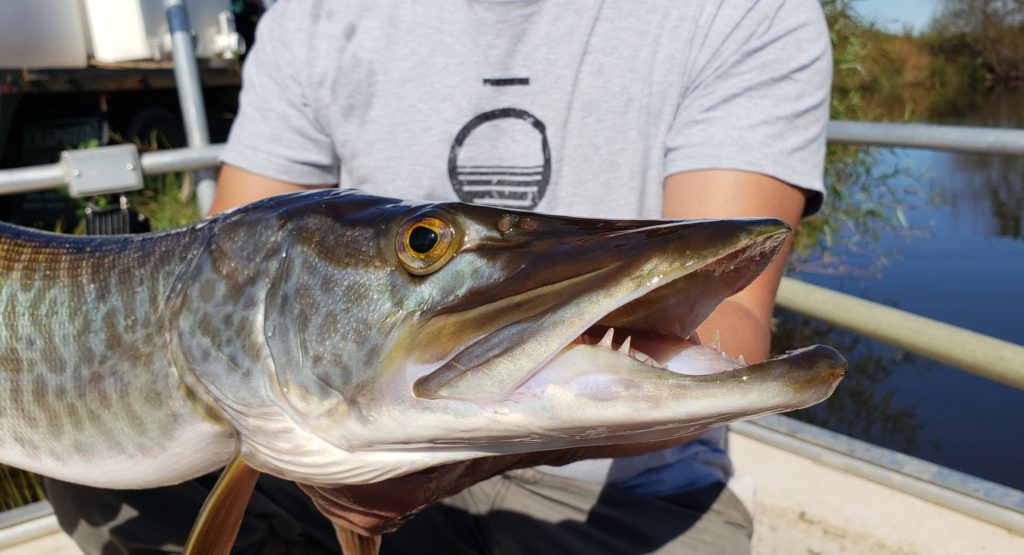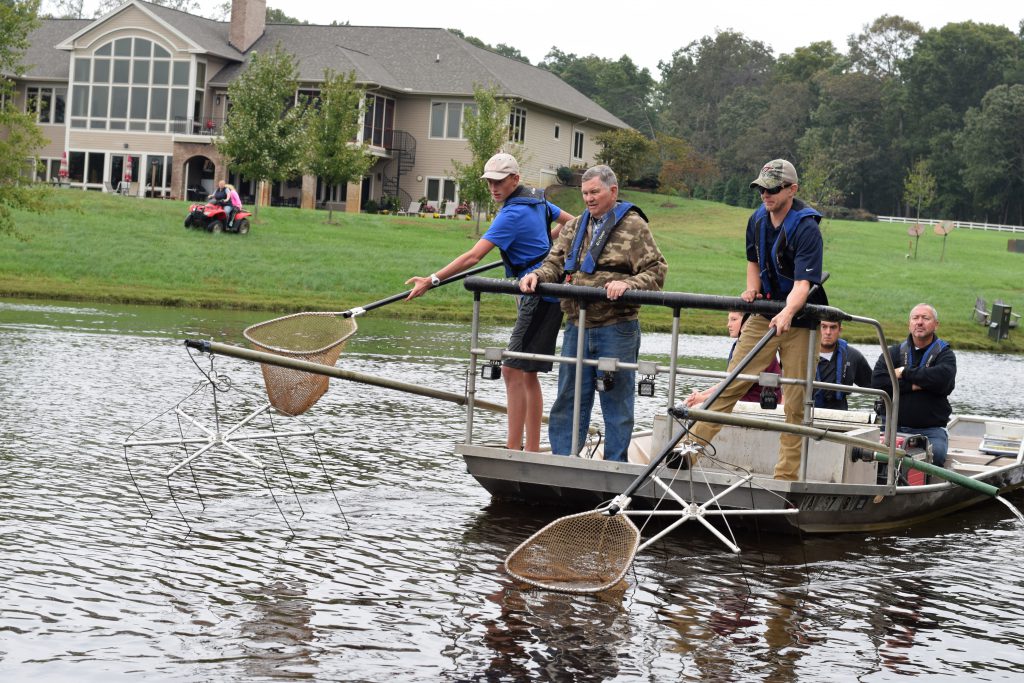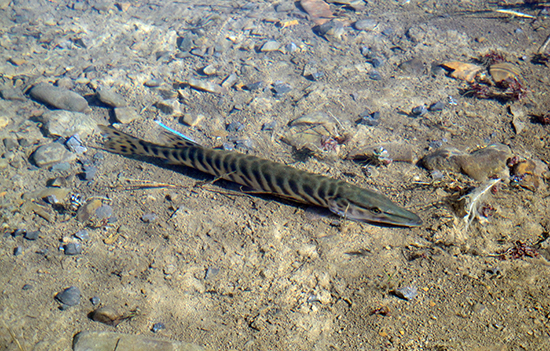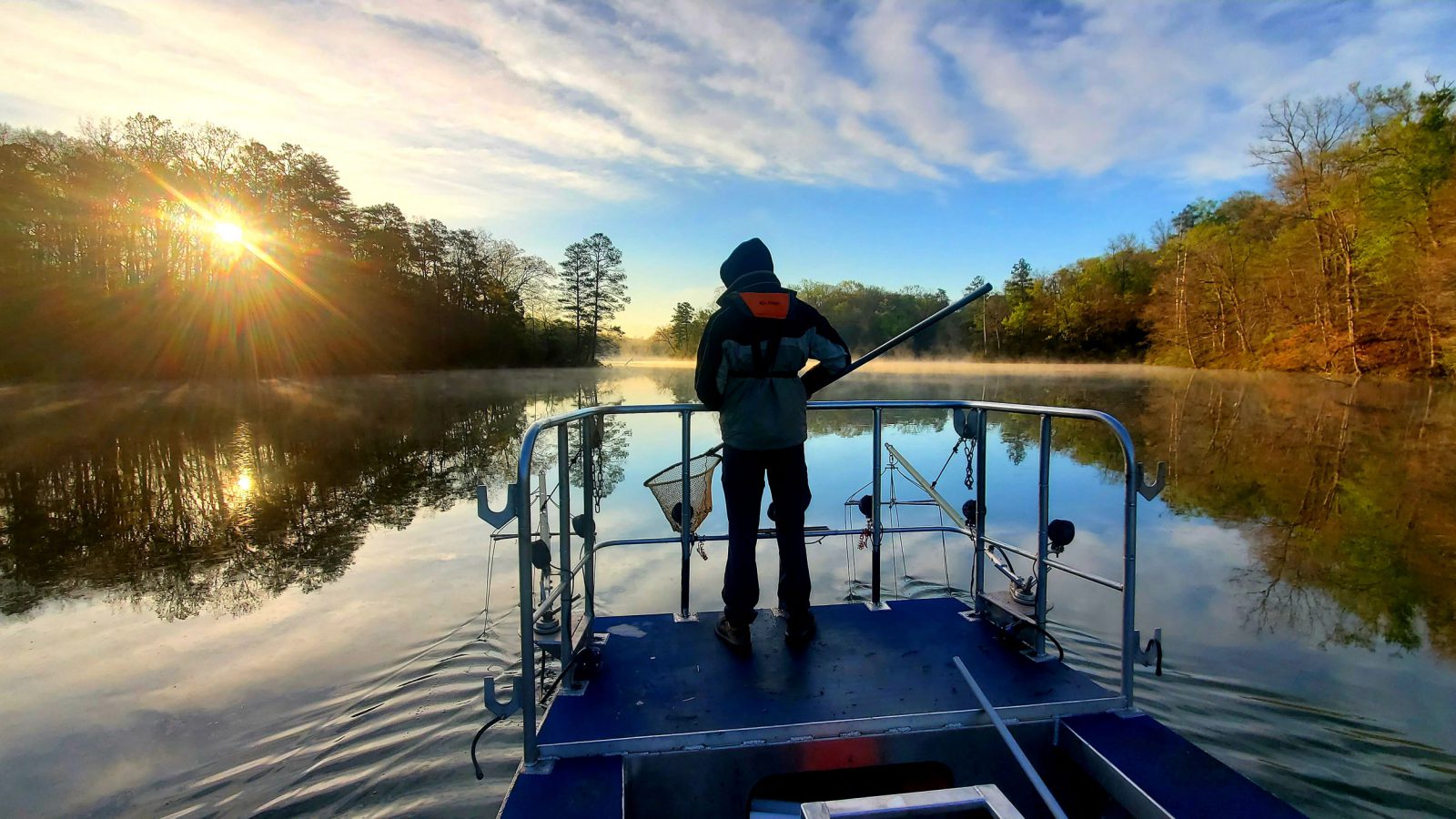
Case Study: How Data Helped Grow Big Tiger Musky
Tiger Musky are hands down one of the most memorable freshwater fish to catch. The feeling you experience when watching a four-foot-long fish breach the water while voraciously attacking your topwater lure, or when you find yourself looking eye-to-eye with one as it follows your lure up to the boat are unforgettable moments. During each encounter, these fish provide a jolt of adrenaline unmatched by most freshwater fish species. Catching them is incredibly fun, and when the bit is on, it is common to miss just as many as you catch. Surprisingly, the fish you miss are often just as memorable as the ones you reel in.
Needless to say, Tiger Musky are an awesome top-end predator. They are a cross between a Muskellunge and a Northern Pike. Oftentimes, they are produced and stocked by state agencies in public water up in the north country. Since they are top-end predators, they typically have a low population, and angler catch rates are normally low. Although not common in private waterbodies, they can be stocked at higher densities since it is easier to artificially prop up the food chain.
Building A Dream Trophy Fishery
Nine years ago in June of 2013, a landowner passionate about big fish acquired a pond with the desire to create a trophy fishery. Nestled in the Virginia countryside, the eight-acre pond appeared to have suitable attributes, including a clean watershed, good water clarity, and areas of deep water. Unfortunately, low elevations in Virginia are hot in the summer months and can reach the upper-temperature range for Tiger Musky growth and survival. To live in this part of the country, they typically require cool spring water throughout the hot summer months, or the waterbody needs to be at a high elevation. This 8-acre pond lacked both. As a result, the success of musky at the site was uncomfortably uncertain, although the deep-water refuge provided some hope that they could succeed.
Prior to making firm management decisions, data was collected and a fisheries management plan was drafted, taking water quality, bathymetry, electrofishing data, and observations into consideration. Alkalinity was 41 parts per million (ppm) and total phosphorus at the surface was 15 parts per billion (ppb). Both were great starting points based on the goals, although the phosphorus level was at least two times lower than it would need to be in the future. A dissolved oxygen temperature profile indicated that the pond had oxygen throughout the entire water column, which was also ideal.
How Data Helps Make Informed Management Decisions
The bathymetric data confirmed the pond had optimal water depth, maxing out at 19 feet, and averaging 7.5. This was perfect since it would provide predator fish with a cool water refuge during the peak summer heat while also limiting how much aquatic vegetation could grow naturally. Aquatic vegetation growth at the time of mapping was minimal and other forms of cover such as rock and trees were lacking. That said, the bottom contour had great character. Water depth varied with sharp drop-offs, ridges, deep holes, and a large shallow flat 3-4 feet deep. The healthy water teamed with this bottom contour character provided a great foundation to build a fun and successful fishery.
The electrofishing data indicated that both the Largemouth Bass and Black Crappie were malnourished and stunted, with only one bass greater than 10 inches collected. The Bluegill and Redear Sunfish numbers were low and only one Golden Shiner was collected. These findings made sense—the pond was low in nutrients, missing proper cover, and heavy with predators, which all lead to a depleted population of forage fish and underweight predators.
Based on the great water quality and the deep water, Tiger Musky and Largemouth Bass were selected as top-end predators in the management plan. The Largemouth Bass would complement the Musky well and could realistically reach over eight pounds in this pond while providing anglers with higher catch rates than the musky.
Successfully creating a sustainable trophy fishery is difficult regardless of how much preparation and foresight goes into the plan. Mother Nature presents many challenges over time that disrupt the best plans. To Improve the probability of short-term and long-term success, rotenone was applied that summer to reset the fishery. Although resetting can be a difficult decision for many owners, it provides significantly higher odds of success by providing control over the predator population.
With a plan in place and the fishery reset, it was time to start growing fish. That summer, three automatic feeders were installed and a progressive fertilization program was implemented. A systemic herbicide was applied to keep unwanted aquatic vegetation from growing. That September, the pond was restocked with 900 Bluegill, 100 Redear Sunfish, 100 pounds of Fathead Minnows, and 30 pounds of Golden Shiners per acre.
Continuing to Monitor the Fishery
In November, 10 Tiger Muskie were stocked per acre. They were eight months old and averaged 10.5 inches. For identification purposes, each musky was tagged with a PIT tag (small glass encapsulated microchip). These are ideal for fish research applications, allowing for good tag retention and minimal handling of the fish when collecting the data. Because they do not require a battery, the tags will last the lifetime of the fish.
The fishery was starting to take shape and throughout the spring, summer, and fall months of 2014, the water would boil with baitfish feeding activity each time the feeders went off. By fall, the forage population was well established. As a result, the thriving ecosystem began attracting wildlife from all over. That winter otters and cormorants became a problem. To solve this, an otter trapping program was implemented and cormorants were actively scared away.
The following spring (2015), 12-month-old PIT-tagged female Largemouth Bass were stocked at a rate of 15 per acre. To increase the genetic diversity and to better understand how bass from different sources around the country compared to one another, five F1’s were stocked per acre, and then Northern strain Largemouth from two different sources were stocked at a rate of 5 per acre each.
Although Threadfin Shad are unable to overwinter due to cold water temperatures in Virginia, they were stocked annually to supplement the forage base. Gizzard Shad were also stocked, but they were only stocked once since they can survive year-round.
The fertilization program continued providing a great plankton bloom each year and the feeders provided forage fish with as much food as they could eat. The management strategy continued its intended trajectory with spring and fall electrofishing, as well as ongoing water quality monitoring to ensure a proactive approach when possible.
Over the years, three generations of Tiger Musky were stocked in 2013, 2015, and 2016 and generations of female Largemouth Bass were stocked in 2015, 2018, and 2019. The fishery was trending well; electrofishing data indicated the musky were surviving and growing, although musky catch rates when electrofishing were intermittent and relatively low over the years.
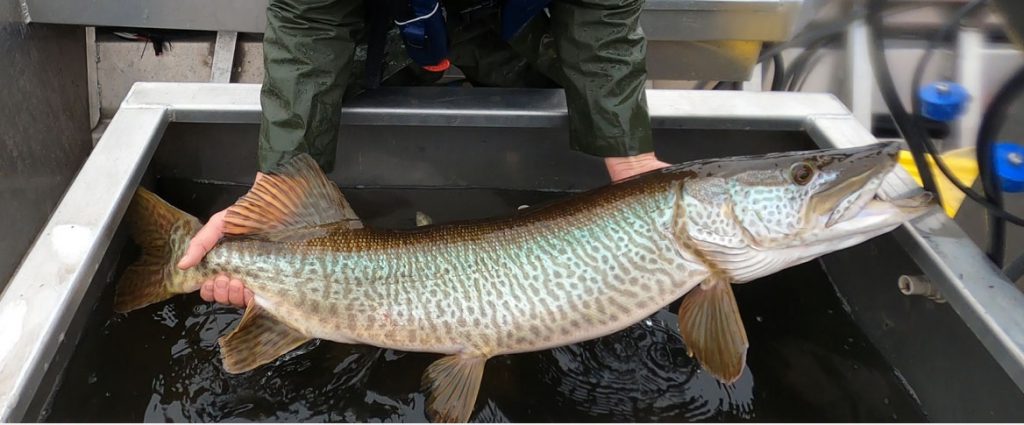
Checking In On Tiger Musky Growth
In late 2018, five years into the project, the owner’s discretionary income decreased and the desire for a world-class fishery waned. As a result, annual spending was greatly reduced. This led to cutting corners, collecting less data, and making more assumptions. Biannual electrofishing, as well as water quality monitoring, were paused. Fertilizing and annual forage fish stocking were discontinued.
Cutting back aggressively increased the probability of failure, but success was still realistic given the fishery’s great foundation teamed with a population of predators that are unable to overpopulate. As a result, momentum could keep moving in a positive direction, but if additional generations of predators were not stocked, the fishery would fizzle out as the predators die of old age.
Several years of relaxed management led to otters going unchecked and for the past three years, the fish feeders were not used. This spring, we electrofished to check on the fish populations. A total of five Tiger Musky were captured from three different age classes. They varied in length from 31 to 41 inches and ranged from 7 to 16 pounds. The largest musky was caught in open water and schooled up with several big Largemouth Bass. The school was suspended off the edge of a vertical ledge that drops from 5 to 12 feet deep. The remaining four muskies were found either along the bank in shallow water or on the large shallow flat.
As expected, the forage fish population was at a lower density than in years past but consisted of diverse size classes of Bluegill, Redear Sunfish, Golden Shiners, and Gizzard Shad. The large predator fish over the years have done a great job keeping the adult Gizzard Shad population from exceeding the edible size. The Largemouth Bass ranged from 16.5 to 21.5 inches and ranged in weight from 3 to 7 pounds.
Build the Fishery of Your Dreams
Over the past nine years, the pond experienced various types of weather patterns, including a couple of hot, dry periods that caused water levels to drop a few feet. Throughout this time, the Tiger Musky have been able to survive and thrive, providing a good indication that the success is sustainable.
Although the fishery lacks younger generations of predators, it is still capable of achieving sustainable success. A simple reimplementation of the robust feeding program and fertilization program would result in the forage base bouncing back quickly, providing the next generation of young predators with plenty of forage.
It has taken years of uncertainty to get to this point. All signs point to this fishery maturing as originally laid out in the Fisheries Management Plan, setting up to provide anglers with adrenalin-filled memories that will last a lifetime. Within a few years, we will learn if these muskies can continue growing up into the mid-40-inch range, as at that point they start thickening up and packing on noticeable weight. It is at this point that the fishery will have achieved true success.
The Benefits of Electrofishing Data
SOLitude Lake Management is a nationwide environmental firm committed to providing sustainable solutions that improve water quality, enhance beauty and preserve natural resources.
SOLitude’s team of aquatic scientists specializes in the development and execution of customized lake, stormwater pond, wetland and fisheries management programs. Services include water quality testing and restoration, algae and aquatic weed control, installation and maintenance of fountains and aeration systems, shoreline erosion control, muck and sediment removal and invasive species management. SOLitude partners with homeowners associations, golf courses, private landowners, businesses and municipalities. SOLitude Lake Management is part of Rentokil, a leading business services company, operating across the United States, Canada and Puerto Rico.
For more information, visit SOLitude Lake Management at solitudelakemanagement.com, and connect on Facebook, LinkedIn and Twitter.








